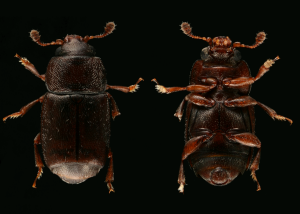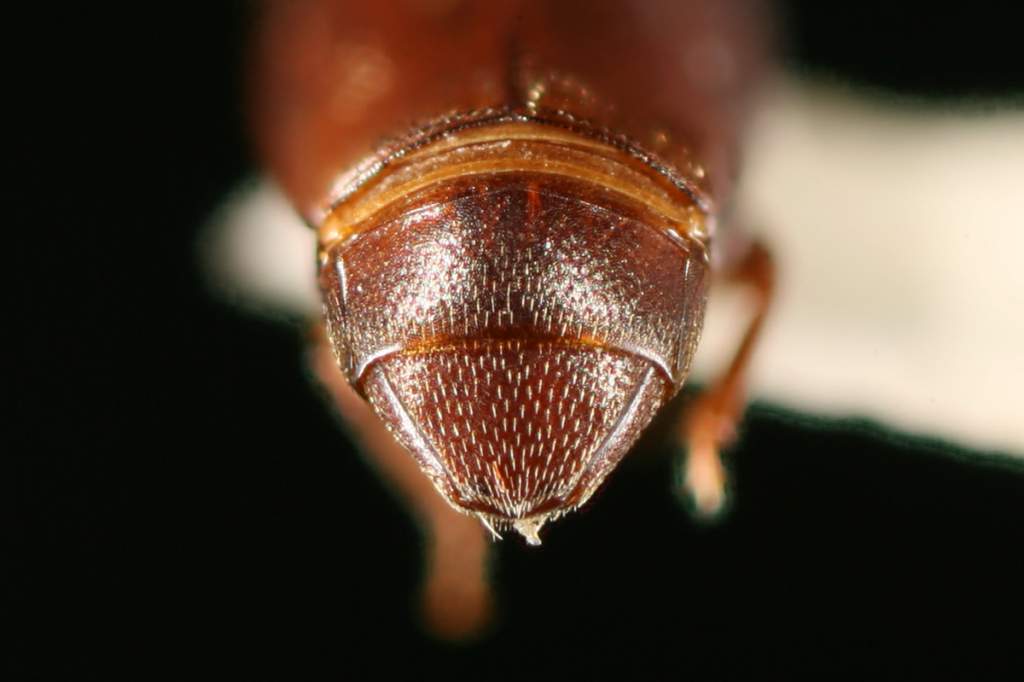Species Fact Sheet
Carpophilus brachypterus (Say, 1825)
Diagnosis: Carpophilus brachypterus specimens are distinguished from other eastern North American species by having the following combination of features: body convexity flattened (fig. 2), antennomere coloration unicolorous throughout antenna, ratio of eye width at widest point in dorsal view to intraocular distance at narrowest point between 1:4 and 1:9, pronotum posterior angles broadly rounded with no distinct ‘corner’ created, and posterior rim of mesocoxal cavities smooth, not forming axillary space.
Distribution: Carpophilus brachypterus is found in eastern North America from Nova Scotia to North Carolina and west from Manitoba to Kansas.
Biology: Collected from a variety of flowers, stored grains, recently cut hardwoods, and decaying fruit (Pellitteri and Boush 1983; Bousquet 1990; Price and Young 2006).
References:
Bousquet Y (1990) – association with stored grain
Connell WA (1956) – adult description and key to adults
Pellitteri P, Boush GM (1983) – association with stored grain
Price MB, Young DK (2006) – feeding habits and association with stored grain
Double-click on images to enlarge
HOW TO CITE THIS WORK:
DiLorenzo, C.L., G.S. Powell, A.R. Cline, and J.V. McHugh (2021) Carpophiline-ID, a taxonomic web resource for the identification of Carpophilinae (Nitidulidae) of eastern North America. (vers. 01.19.2021) University of Georgia, retrieved from https://site.caes.uga.edu/carpophiline-id/



